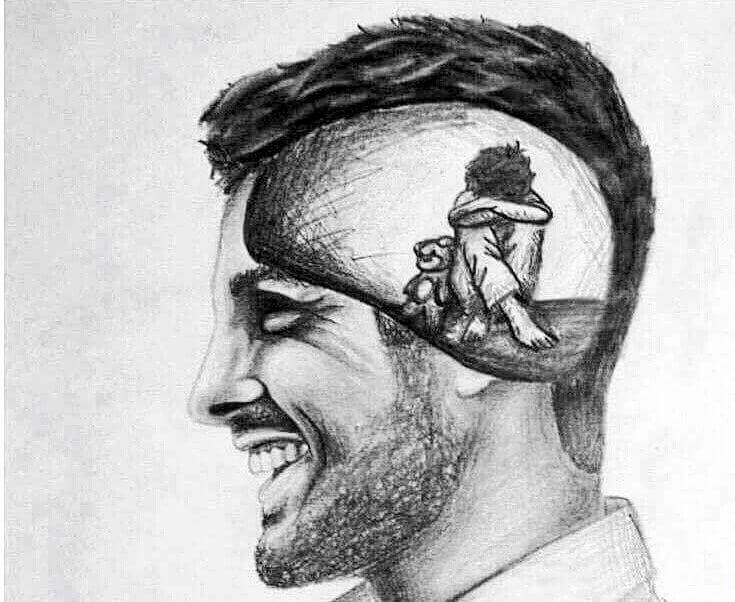Depression, often viewed as a debilitating mental health condition, has a complex and paradoxical relationship with creativity, particularly in the art world. While it brings immense suffering, depression can also be a profound source of inspiration, pushing artists to explore the depths of human experience and produce compelling, resonant works. This article delves into the intricate connection between depression and creativity in the art world, exploring how this challenging condition can foster extraordinary artistic achievements.
The Intricate Connection Between Depression and Creativity
Depression and creativity share a nuanced relationship. Many artists, both historical and contemporary, have grappled with depression while producing some of their most significant works. The emotional intensity and introspection associated with depression often lead artists to explore themes of pain, loss, and existential angst, which resonate deeply with audiences. This profound emotional depth can drive artists to push the boundaries of their creativity, resulting in innovative and impactful art.
Historical Context: Depression in Renowned Artists
Throughout history, numerous renowned artists have experienced depression, and their struggles have significantly influenced their work. Vincent van Gogh, for example, battled severe mental health issues throughout his life. His emotional turmoil is vividly reflected in his paintings, which are characterized by bold colors and dramatic, emotional intensity. Similarly, the poet Sylvia Plath’s struggle with depression is evident in her poignant, introspective writing, which continues to captivate readers.
Contemporary Artists and Mental Health
In the contemporary art world, the conversation around mental health has become more open and inclusive, allowing artists to express their struggles more freely. This openness has led to a greater understanding of how depression can fuel creativity. Artists like Yayoi Kusama, known for her immersive installations and polka dot motifs, have openly discussed their battles with mental health, illustrating how their experiences have shaped their artistic vision.
The Role of Depression in Artistic Innovation
Depression can drive artists to explore new perspectives and push the boundaries of their medium. The introspection and heightened emotional awareness that often accompany depression can lead to profound artistic breakthroughs. For instance, Edvard Munch’s iconic painting “The Scream” captures the existential dread and anxiety that many individuals experience, making it a powerful and relatable piece of art.
The Process of Channeling Depression into Art
Artists often channel their depressive episodes into their creative process, using art as a means of coping and expression. This cathartic process allows them to externalize their internal struggles, transforming pain into beauty. The act of creating can provide a sense of purpose and achievement, offering temporary relief from depressive symptoms.
The Therapeutic Aspect of Art for Artists with Depression
Art is not only a medium for expressing depression but also a therapeutic tool. Engaging in the creative process can provide a sense of control and accomplishment, which are often diminished during depressive episodes. Art therapy, for instance, has been widely recognized for its effectiveness in helping individuals manage depression and other mental health conditions.
Art Therapy and Its Benefits
Art therapy involves using the creative process to explore emotions, reduce anxiety, and improve mental health. This therapeutic approach can be particularly beneficial for artists who experience depression, as it provides a structured outlet for expressing and processing complex emotions. Research has shown that art therapy can lead to significant improvements in mood, self-esteem, and overall mental health.
The Impact of Depression on Artistic Communities
The relationship between depression and creativity also extends to artistic communities. The struggles of individual artists can inspire solidarity and collective support within these communities. By sharing their experiences, artists can foster a sense of understanding and empathy, creating a supportive environment where mental health issues are acknowledged and addressed.
Building Supportive Artistic Communities
Supportive artistic communities play a crucial role in helping artists manage depression. These communities can provide a safe space for artists to share their experiences, seek advice, and find encouragement. Initiatives such as mental health workshops, peer support groups, and collaborative projects can strengthen these communities and promote mental well-being among artists.
Conclusion: Embracing the Complexity of Depression in the Art World
The relationship between depression and creativity is complex and multifaceted. While depression can bring immense suffering, it can also serve as a powerful catalyst for artistic expression and innovation. By acknowledging and addressing the mental health challenges faced by artists, we can foster an environment that supports both their well-being and their creative endeavors. Understanding this intricate connection allows us to appreciate the profound impact that depression can have on the art world, transforming pain into powerful and resonant works of art.
























